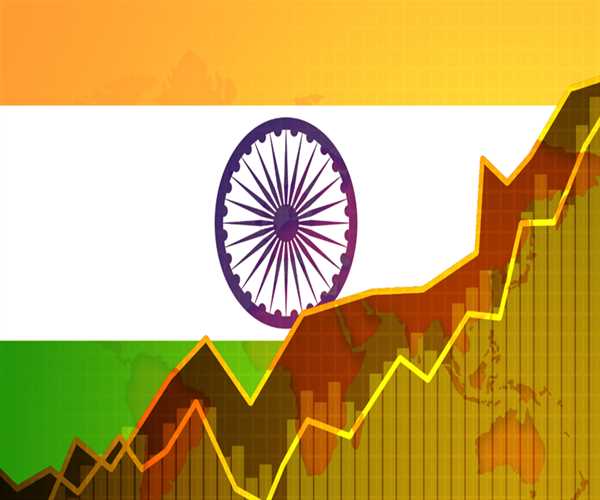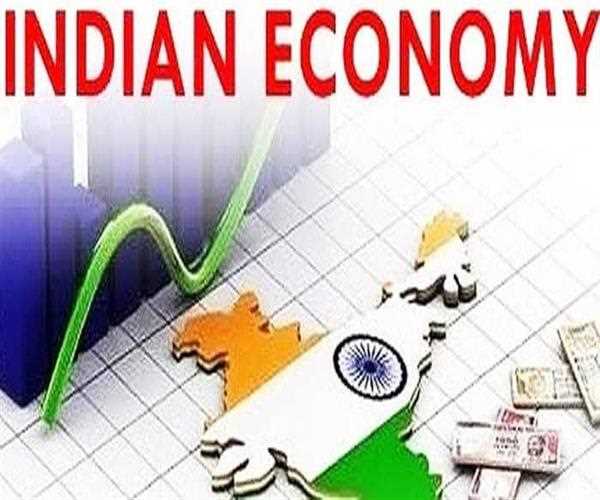
05-May-2023 , Updated on 5/5/2023 6:26:15 AM
The Indian Economy: Latest Trends and Forecasts for Growth and Development
The Indian economy is one of the fastest-growing economies in the world. Despite being hit hard by the COVID-19 pandemic, the economy has shown resilience and is expected to rebound in the coming years. In this article, we will explore the latest trends and forecasts for growth and development in the Indian economy.
Overview of the Indian Economy
The Indian economy is the fifth-largest economy in the world by nominal GDP and the third-largest by purchasing power parity. The economy is driven by several sectors, including agriculture, manufacturing, and services. The services sector is the largest contributor to the economy, accounting for over 50% of the GDP.

The Indian economy has undergone significant changes in the past few decades, with the government implementing several reforms to liberalize and modernize the economy. The reforms have led to increased foreign investment, improved infrastructure, and a growing middle class.
According to the data for the most recent quarter (Q3), growth year over year (YoY) was 4.4%, which is close to our January estimate of 4.5% YoY (figure 2). The substantial upward revision of last year's data raised the foundation for this year's growth estimates, despite the fact that it appears to have been the weakest quarter of the fiscal year.
Two perceptions are quite important: Exports performed well despite the global slowdown, probably due to the currency's depreciation against the dollar. India's services exports skyrocketed by 30% between April and February, while goods exports remained modest. Demand for technology services exports, where India has a comparative advantage, increased as a result of a strong global digitization drive, cost-cutting measures taken by businesses to deal with the impending slowdown and the growing trend of remote work.
Latest Trends and Forecasts
COVID-19 Impact: The COVID-19 pandemic has had a significant impact on the Indian economy. The lockdowns and restrictions implemented to control the spread of the virus have led to a sharp contraction in economic activity. However, the economy is expected to rebound in the coming years, with growth forecasts for 2021-2022 ranging from 8% to 11%.
Agriculture Sector: The agriculture sector is a significant contributor to the Indian economy, accounting for over 15% of the GDP. The sector has shown resilience during the pandemic, with strong demand for food products and increased government support. The government has announced several measures to boost the sector, including increased investment in irrigation, crop insurance, and rural infrastructure.
Manufacturing Sector: The manufacturing sector is a critical component of the Indian economy, contributing around 16% of the GDP. The sector has been hit hard by the pandemic, with disruptions in supply chains and reduced demand. However, the sector is expected to rebound in the coming years, with the government implementing several measures to support the sector, including the Production Linked Incentive (PLI) scheme.
Services Sector: The services sector is the largest contributor to the Indian economy, accounting for over 50% of the GDP. The sector has been hit hard by the pandemic, with reduced demand for services such as travel, hospitality, and entertainment. However, the sector is expected to rebound in the coming years, with increased government spending on healthcare, education, and digital infrastructure.
Infrastructure Development: The Indian government has announced several measures to boost infrastructure development, including the National Infrastructure Pipeline (NIP) project. The project aims to invest around $1.5 trillion in infrastructure development over the next five years, with a focus on sectors such as energy, transportation, and urban development.
Challenges and Opportunities
Despite the significant progress made by the Indian economy in recent years, there are several challenges that need to be addressed. Some of the significant challenges facing the Indian economy include:
Inflation: Inflation has been a significant challenge for the Indian economy, with high food and fuel prices contributing to a rise in inflation. The government has implemented several measures to address inflation, including increased supply of essential commodities and the implementation of monetary policy measures.
Unemployment: Unemployment has been a significant challenge for the Indian economy, with the pandemic leading to job losses and reduced employment opportunities. The government has implemented several measures to address unemployment, including the Atmanirbhar Bharat Abhiyan scheme and the National Employment Guarantee Act.
Infrastructure Development: Infrastructure development remains a significant challenge for the Indian economy, with inadequate infrastructure leading to bottlenecks and reduced efficiency. The government has implemented several measures to boost infrastructure development, including increased investment and public-private partnerships.
There are also several opportunities for the Indian economy. The country's large population, growing middle class, and skilled workforce make it an attractive destination for foreign investment. The government's emphasis on digital infrastructure and the growing adoption of technology also presents opportunities for growth in sectors such as e-commerce, fintech, and software services.
In addition, the Indian government's focus on renewable energy presents opportunities for growth in the energy sector. India has set ambitious targets for renewable energy, with a goal to achieve 450 GW of renewable energy capacity by 2030. The government has implemented several measures to support the sector, including incentives for renewable energy projects and the launch of the National Solar Mission.
The Indian economy has shown resilience during the COVID-19 pandemic and is expected to rebound in the coming years. The government's focus on infrastructure development, renewable energy, and digital infrastructure presents opportunities for growth in several sectors. However, there are also challenges that need to be addressed, including inflation, unemployment, and infrastructure development.
Overall, the Indian economy has significant potential for growth and development, and the government's emphasis on reforms and modernization bodes well for the future. As the country continues to navigate the challenges posed by the pandemic, it is essential to focus on policies and measures that promote inclusive growth and sustainable development.

Student
Economics can be broken down into microeconomics, which looks at individual decisions, and macroeconomics, which is concerned with the economy as a whole. Both types of economics utilize historical trends and current conditions to inform business decision-making and make predictions about how markets might behave in the future. Students who choose to study economics not only gain the skills needed to understand complex markets but come away with strong analytical and problem-solving skills.
Join Our Newsletter
Subscribe to our newsletter to receive emails about new views posts, releases and updates.
Copyright 2010 - 2025 MindStick Software Pvt. Ltd. All Rights Reserved Privacy Policy | Terms & Conditions | Cookie Policy